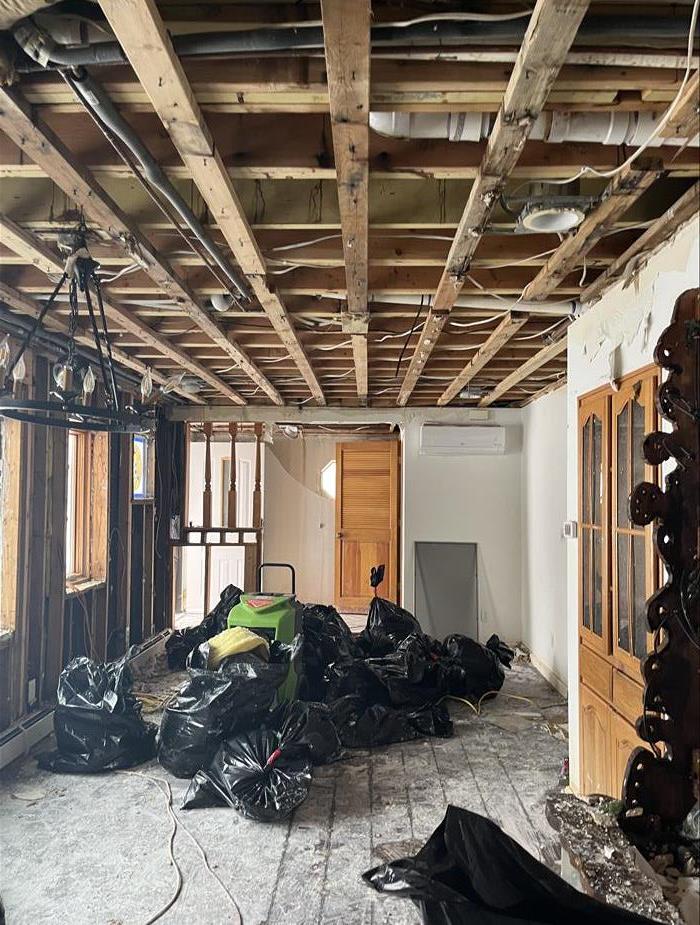Kitchen Mold: Prevention Tips and Effective Elimination Strategie
9/30/2024 (Permalink)
Your kitchen is one of the most frequently used spaces in your home, and it’s also a prime target for mold growth. If left unchecked, mold can spread quickly, damaging surfaces and creating an unpleasant environment.
The good news is that with proper prevention and elimination techniques, you can keep your kitchen mold-free. Let’s explore how you can prevent mold from taking over your kitchen and the steps to eliminate it if it’s already present.
Why Mold Grows in Kitchens
Mold needs three things to grow: moisture, warmth, and a food source. Kitchens often provide all three:
- Moisture: Steam from cooking, water from dishwashing, and spills or leaks create a damp environment.
- Warmth: Kitchens are often warm due to cooking and the use of appliances like stoves and dishwashers.
- Food Sources: Organic material like food scraps, grease, and dirt are ideal for mold growth.
Understanding these factors can help you take proactive steps to prevent mold from settling in.
How to Prevent Mold in Your Kitchen
Control Moisture
Since moisture is the key ingredient for mold growth, managing it is your first line of defense. Here’s how you can do that:
- Fix leaks immediately: Whether it’s a leaky faucet, a dripping pipe under the sink, or water seeping from the dishwasher, address any leaks as soon as they appear.
- Use a dehumidifier: If your kitchen tends to be humid, consider using a dehumidifier to reduce moisture in the air.
- Wipe up spills quickly: Don’t let water or other liquids sit on countertops or floors for long periods. Clean up spills immediately to prevent moisture buildup.
- Run your exhaust fan: Every time you cook or run hot water, turn on the kitchen exhaust fan to reduce humidity levels.
Clean Regularly
A clean kitchen is less likely to harbor mold. Here are a few cleaning tips to keep mold at bay:
- Wipe down surfaces: Regularly clean countertops, sinks, and backsplashes with warm, soapy water or a kitchen-safe cleaning solution to remove grease and food particles.
- Clean appliances: Mold can grow inside refrigerators, dishwashers, and microwaves. Clean these appliances regularly, especially seals and rubber gaskets where moisture can get trapped.
- Empty the trash: Don’t let food waste or damp items sit in your trash can for too long. Empty the trash regularly and clean the bin to avoid mold growth.
Ensure Proper Ventilation
Good airflow helps prevent moisture buildup. Here’s how to improve ventilation in your kitchen:
- Open windows: If your kitchen has windows, open them occasionally to let fresh air circulate and reduce humidity.
- Use ceiling fans: If you have ceiling fans, use them while cooking or cleaning to keep air moving.
- Keep cabinets open: Leave cabinet doors open occasionally to allow air circulation, especially under the sink, where mold is likely to grow.
Store Food Properly
Mold can grow on old or improperly stored food. Take these steps to prevent it:
- Store food in sealed containers: Keep leftovers, fruits, and vegetables in airtight containers to prevent mold spores from settling on them.
- Check for spoiled food: Regularly check your fridge and pantry for expired or spoiled food and dispose of it immediately.
How to Eliminate Mold in Your Kitchen
Identify the Source
Before cleaning, locate the source of the moisture that caused the mold. This could be a leaky pipe, poor ventilation, or even condensation from appliances. Fix the issue to prevent the mold from returning.
Use Mold-Removing Products
You don’t need harsh chemicals to remove mold from your kitchen. Many kitchen-safe products can do the job effectively:
- White vinegar: Spray undiluted white vinegar directly onto the moldy area and let it sit for an hour. Wipe it away with a damp cloth.
- Baking soda: Mix a teaspoon of baking soda with water to create a paste. Scrub the moldy area with the paste and then rinse with water.
- Dish soap and water: For light mold growth, warm soapy water can be enough to clean it off. Use a sponge or brush to scrub the area.
Always use gloves and proper cleaning materials when dealing with mold, and avoid using bleach on porous surfaces, as it can damage them without fully removing the mold.
Call SERVPRO® for Professional Help
If the mold is extensive or in hard-to-reach places, consider calling SERVPRO for professional mold remediation. SERVPRO’s team has the expertise and tools to remove mold safely and thoroughly, ensuring your kitchen is completely mold-free and protected against future outbreaks.
For more extensive mold issues, SERVPRO of Northern Colorado Springs/Tri-Lakes is here to help with professional mold remediation services, ensuring that your kitchen remains a safe and pleasant environment.

 24/7 Emergency Service
24/7 Emergency Service
